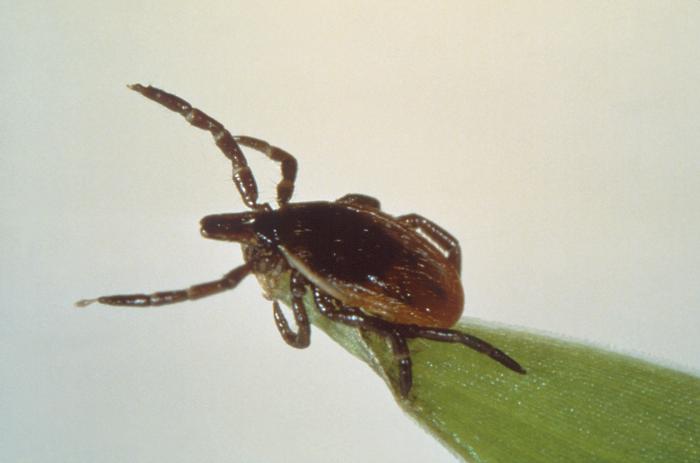Lab testing confirms new Lyme-related bacteria discovered in three BC ticks
News Release
BC Centre for Disease Control
November 7, 2016
For Immediate Release
Vancouver – The BC Centre for Disease Control (BCCDC) and Public Health Agency of Canada (PHAC) confirm three ticks collected in British Columbia since June have tested positive for a new species of bacteria closely related to Borrelia mayonii (B. mayonii).
“This is a rare discovery which highlights that our tick surveillance program is working at both a local and national level,” said Dr. Eleni Galanis, physician epidemiologist with the BCCDC. “While further investigation is warranted, the health threat posed by this new species of bacteria is extremely low.”
Borrelia mayonii is a newly-discovered species of bacteria that can cause Lyme disease in people. Until now, it had only been confirmed in the Midwestern United States. According to the Centers for Disease Control and Prevention in the United States, six of approximately 9,000 diagnostic samples from residents of Minnesota, Wisconsin, and North Dakota revealed the presence of B. mayonii.
The species of bacteria discovered in the three BC tick samples is slightly different than that in the United States, and there is no evidence that anyone in BC has developed Lyme disease from this B. mayonii-like bacteria.
 The first infected tick was removed from a dog in June 2016 that had been camping with its owner in the Lower Mainland. While the tick was positive for the new bacteria, the dog remains well and has no signs or symptoms of Lyme disease.
The first infected tick was removed from a dog in June 2016 that had been camping with its owner in the Lower Mainland. While the tick was positive for the new bacteria, the dog remains well and has no signs or symptoms of Lyme disease.- The second infected tick was removed from a child in July 2016. The child is believed to have been bitten in the Central Interior of BC. The child also remains well and has had no signs or symptoms of Lyme disease.
- The third infected tick was removed from a dog in the Lower Mainland in September 2016. This dog also has no signs or symptoms of Lyme disease.
The BCCDC and PHAC are studying the clinical implications of this discovery, and follow up has occurred with the pet owners and the family of the child involved.
“When the first tick with this B. mayonii-like bacteria was confirmed by PHAC’s National Microbiology Laboratory, the BCCDC Public Health Laboratory retested all tick samples that had inconclusive results over the last several years,” said Dr. Muhammad Morshed, clinical microbiologist with the BCCDC. “Of more than 19,000 ticks tested by PHAC, and nearly 2,800 more at the BCCDC, these are the only three that have been found with this B. mayonii-like bacteria.”
About ticks and Lyme disease in BC
- In BC, less than 1 per cent of ticks tested carry bacteria that can cause Lyme disease, and the prevalence of Lyme-causing bacteria in BC ticks has remained consistently low.
- Two species of ticks in BC have been shown to carry the agent of Lyme disease: Ixodes pacificus and Ixodes angustus. These are different from the ticks that carry Lyme disease in eastern Canada and the United States (Ixodes scapularis).
- The three ticks infected with the B. mayonii-like bacteria in BC were all Ixodes angustus ticks. This tick species is found in low numbers across Canada and most often is found on rodents and rabbits; however, it does feed on domestic animals like dogs and cats and will occasionally bite humans.
- Lyme disease in BC is typically caused by a bacterium called Borrelia burgdorferi (B. burgdorferi) which is spread by Ixodes ticks.
- Ixodes ticks can be found throughout BC. However, most ticks infected with B. burgdorferi are found in southern BC, including Vancouver Island, the Lower Mainland, the Sunshine Coast, the Fraser Valley and the Kootenays.
To protect yourself from tick and insect bites
- Stay on cleared trails whenever possible when walking in the woods or tall grass.
- Wear light coloured clothing, tuck your top into your pants and tuck your pants into your boots or socks.
- Put insect repellent containing DEET on all uncovered skin. Reapply as frequently as directed on the container.
- Check clothing and scalp (covered or not) when leaving an area where ticks may live.
- Check in folds of skin. Have someone help you check hard-to-see areas. When a tick is located, remove it immediately. Check your whole body! Don’t stop when you find one tick. There may be more. Make sure the lighting is good so that you will not miss seeing the ticks.
- Regularly check household pets for ticks and talk to your veterinarian about products to prevent tick bites.
- If you have been bitten by a tick, and you develop symptoms, see your doctor about possible testing and treatment options.
For more on B. mayonii, see the Centers for Disease Control and Prevention website:
http://www.cdc.gov/ticks/mayonii.html
For more on ticks in BC, including how to properly remove and submit a tick for testing, see the BCCDC website: http://www.bccdc.ca/health-info/diseases-conditions/lyme-disease-borrelia-burgdorferi-infection
The BC Centre for Disease Control, an agency of the Provincial Health Services Authority, provides provincial and national leadership in public health through surveillance, detection, treatment, prevention and consultation services. The Centre provides both direct diagnostic and treatment services for people with diseases of public health importance and analytical and policy support to all levels of government and health authorities. For more information, please visit www.bccdc.ca or follow us on Twitter @CDCofBC.
The Provincial Health Services Authority (PHSA) plans, manages and evaluates selected specialty and province-wide health care services across BC, working with the five geographic health authorities to deliver province-wide solutions that improve the health of British Columbians. For more information, visit www.phsa.ca or follow us on Twitter @PHSAofBC.
